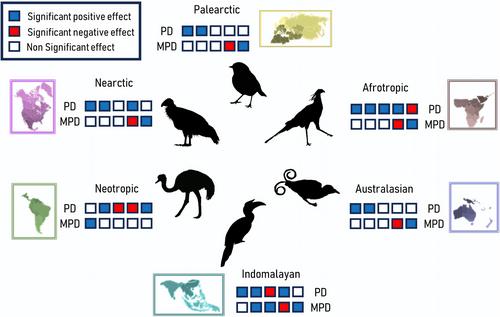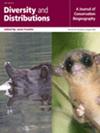Temperature significantly influences the composition and structure of biotic communities at large scales. While its role in shaping taxonomic diversity is well-documented, its relationship with other facets of biodiversity, like phylogenetic diversity, remains poorly known. Understanding how and to which extent temperature contributes to global patterns of phylogenetic diversity compared to other biodiversity-structuring factors is crucial for comprehending how bird assemblages are structured worldwide, predicting their response to global-change drivers and supporting conservation policies focused on preserving bird genetic diversity and evolutionary history.
Worldwide.
We analyse the role of temperature in predicting bird regional phylogenetic richness (PD) and divergence (MPD) worldwide, before and after controlling for the effect of species richness (SR). We also assess the shape of this relationship in different biogeographic realms and compare its explanatory power with other key biodiversity-structuring factors such as elevation, human impact index, net primary productivity and land use diversity.
Our findings underscore the high significance and consistency of temperature as a key predictor positively associated with bird PD and MPD across the six main biogeographic realms, even after accounting for SR and latitude, suggesting that temperature modulates the intrinsic capacity of environments to support a diverse array of lineages. In addition, PD and MPD tended to increase at low elevations, but the human-impact index did not effectively predict bird phylogenetic diversity at this scale. Furthermore, high PD was linked to regions with high primary productivity and high land-use diversity, although both of these relationships were strongly mediated by SR.
This study unveils the key role of temperature in explaining bird phylogenetic diversity worldwide over other key biodiversity-structuring factors and points to the profound implications that climate change will have on the amount of evolutionary history held in bird assemblages, beyond species extinctions or range shifts alone.



